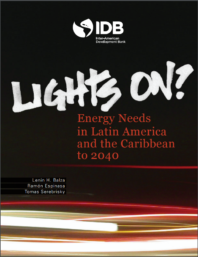
Lights On? Energy Needs in Latin America and the Caribbean to 2040

Author’s Introduction:
This report intends to answer how much energy is likely to be needed in countries across the Latin America and the Caribbean (LAC) through 2040? We estimate region-wide primary energy demand to be at least 80% higher than present day levels, reaching over 1,538 million tonnes of oil equivalent (MTOE). However, the region as a whole is expected to be more energy efficient. According to our estimates, LAC will have reduced energy intensity by more than 17% between now and 2040.
On the electricity front, unless current trends are reversed, electricity requirements are estimated to increase by more than 91% through 2040, reaching over 2,970 terawatt-hours (TWh). That means that the region will need to add nearly 1,500 TWh to its current production. To put that figure into context, meeting these electricity needs will require the equivalent of planning, building and maintaining eighteen new hydropower stations the size of Paraguay-Brazil’s Itaipu (the first and the third largest region-wide and worldwide, respectively). This does not even yet take into account the unprecedented quantum of investment required.
This report is meant to provide a basis for understanding future energy demand in LAC countries, and to present open and transparent energy demand scenarios for the region through 2040. Estimating LAC’s energy requirements in 2040 is part of a larger programmatic knowledge agenda in the IDB’s Infrastructure strategy aimed to support the LAC countries in adopting a new vision of sustainable and inclusive growth.
The rest of the report proceeds as follows. Section 2 examines some of the linkages between energy and development in LAC countries. Section 3 presents the region’s energy consumption at a glance. Section 4 summarizes the projections for total energy use and electricity requirements, based upon assumed growth rates of per-capita income and energy prices across the region. Section 5 investigates associated challenges. Section 6 offers some concluding remarks.
- Issue:
- Energy
- Regions:
- Caribbean, Latin America
- Year Published:
- 2015
- Authors:
- Tomas Serebrisky, Ramón Espinasa, Lenin H. Balza
- Institution:
- Inter-American Development Bank (IDB)

